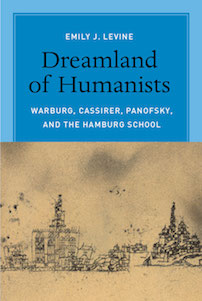By Svetlana Alpers
This is a thoughtful and massively researched book concerning the flowering and sad fate of an important strand of 20th century humanist culture. The time is roughly that of the Weimar Republic, but the setting is Hamburg. The institutions are the new privately founded city university and the new private Warburg library. The humanists are three notable German Jewish scholars: Aby Warburg (b. 1866), Ernst Cassirer (b.1874), and Erwin Panofsky (b. 1892). The first was born into a leading Hamburg banking family, devoted his life to Renaissance studies and built a library. The second was a philosopher who, amazingly for a Jew in Germany, was appointed both ordinarius and then rector of the university in Hamburg. The third was a brilliant art historian with philosophical leanings. A common interest (with different emphases) in symbolic forms brought them together. Warburg, whose mental disequilibrium can be said to have matched the times, died in 1929. Close associates saw to it that his library escaped to London in 1933. Cassirer fled, eventually to America where his work cannot be said to have survived the assault—political but also intellectual—that Hitler’s Germany presented to it. Panofsky emigrated to the United States and transformed himself into a foundational figure in the study of art history.
The aim of the book is to present the lives and work of the three men within the circumstances of their lives and their world. One learns about many disparate but ultimately connected things: the nature of German universities and the peculiar invention of one in the mercantile city of Hamburg; the marginalized place of Jews in German academic life; the status of Kantian thought and in particular the sense in which, much like devotion to Goethe, it offered a zone in German culture where Jews felt at their ease. As Levine suggestively points out, It is one of the tragedies of this tale that this scholarly embrace of universalism was almost always interpreted by non-Jews as peculiar to Judaism.
Levine’s emphasis and analysis is almost always right on. She is right that the linguistic and cultural translation of Panofsky’s scholarship ultimately yielded ideas purified of their subtlety and blunted in their impact. I would say, however, that if asked, I still recommend Panofsky’s Meaning in the Visual Arts as a first reading in art history. The first book on art history I read remains as marvelous today as it was almost sixty years ago.
In the face of the great interest there is just now in Warburg’s thought, Levine rightly insists that the library was his most significant scholarly achievement. She emphasizes the notion that it was a problem library—the problem it staged being to trace human understanding over time. As Michael Baxandall once said of reading Warburg, It is elusive and that is why people are writing about him now. . . people see different things in him, partly because he never simplified his view into a sort of crystallized form; it’s fluid.
As an art historian myself, who had the great luck to spend several years in the library and with the staff of the Warburg Institute in London, I would say that its translation to survive and flourish in London is something that deserved more emphasis in the book. With a staff that included Gombrich, Frances Yates, J.B Trapp, Donald Gordon, Michael Baxandall and visiting scholars of note from Europe and America, the private library founded in Hamburg had an important intellectual after-life in the second half of the 20th century.
Emily Levine’s subject seems obvious now that she has done it. She has taken on almost too much. But if it demands a certain dedication to read through this book, so be it. One learns a lot and is left with much to ponder.
Svetlana Alpers, an artist, critic and renowned art historian, is professor emerita of the history of art at the University of California, Berkeley and a visiting scholar in the Department of Fine Arts at New York University.




